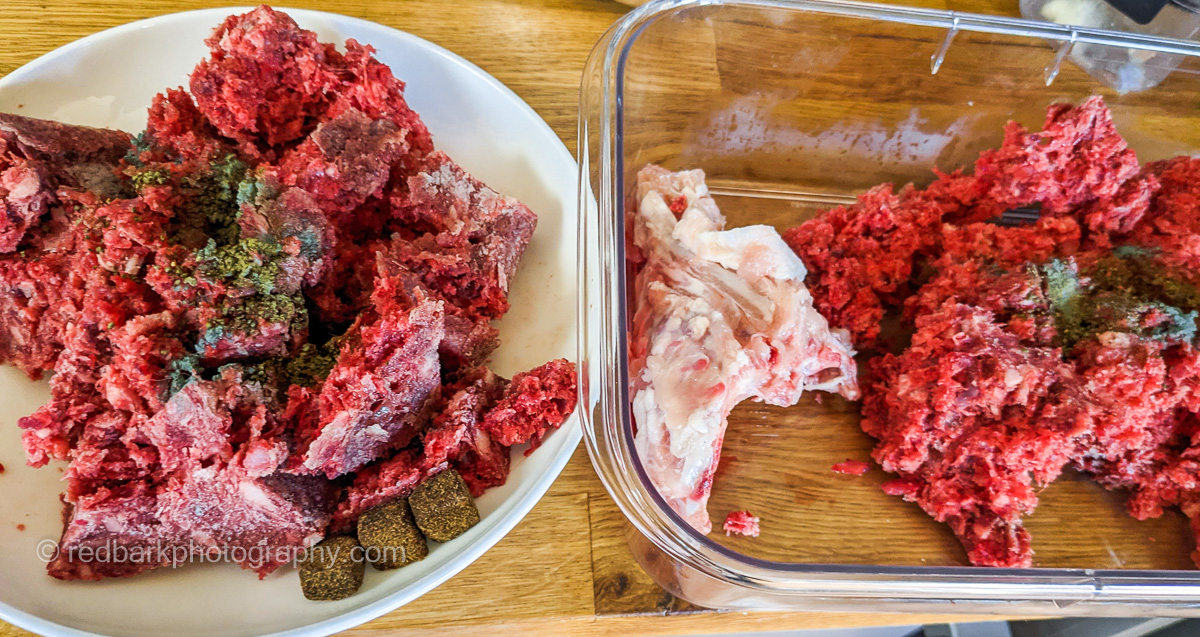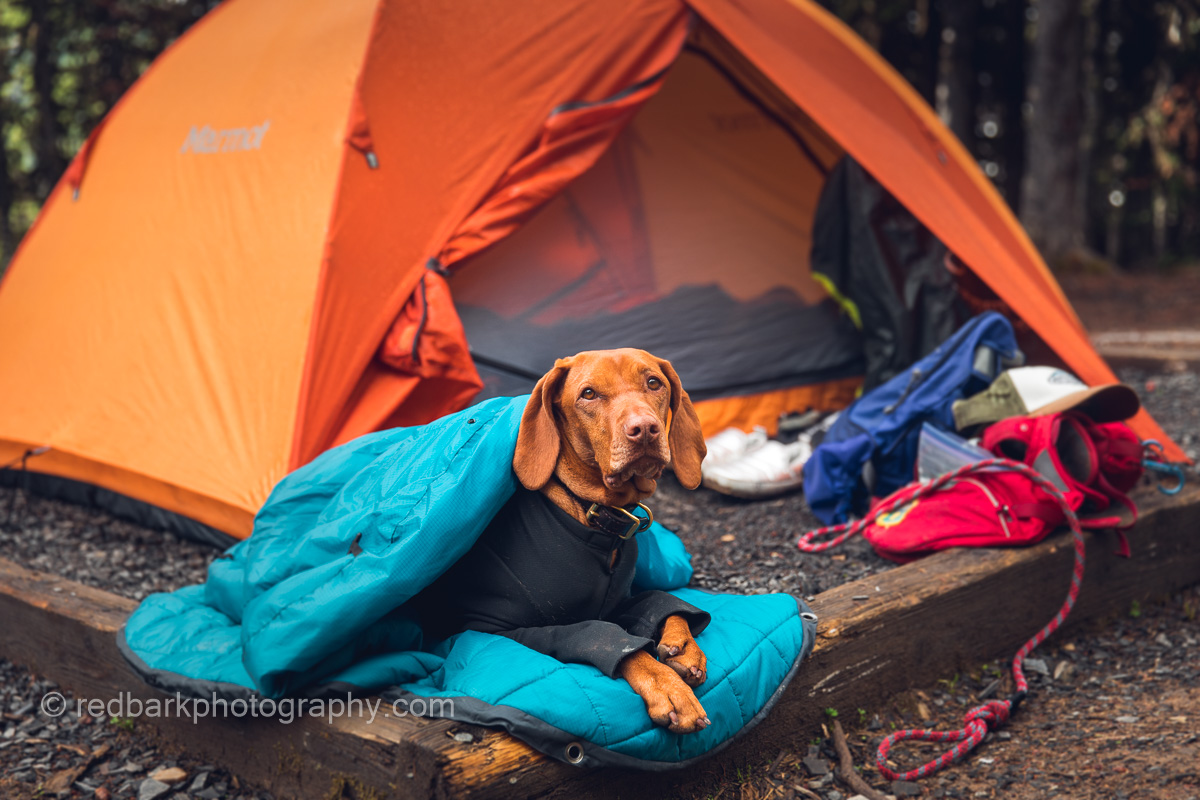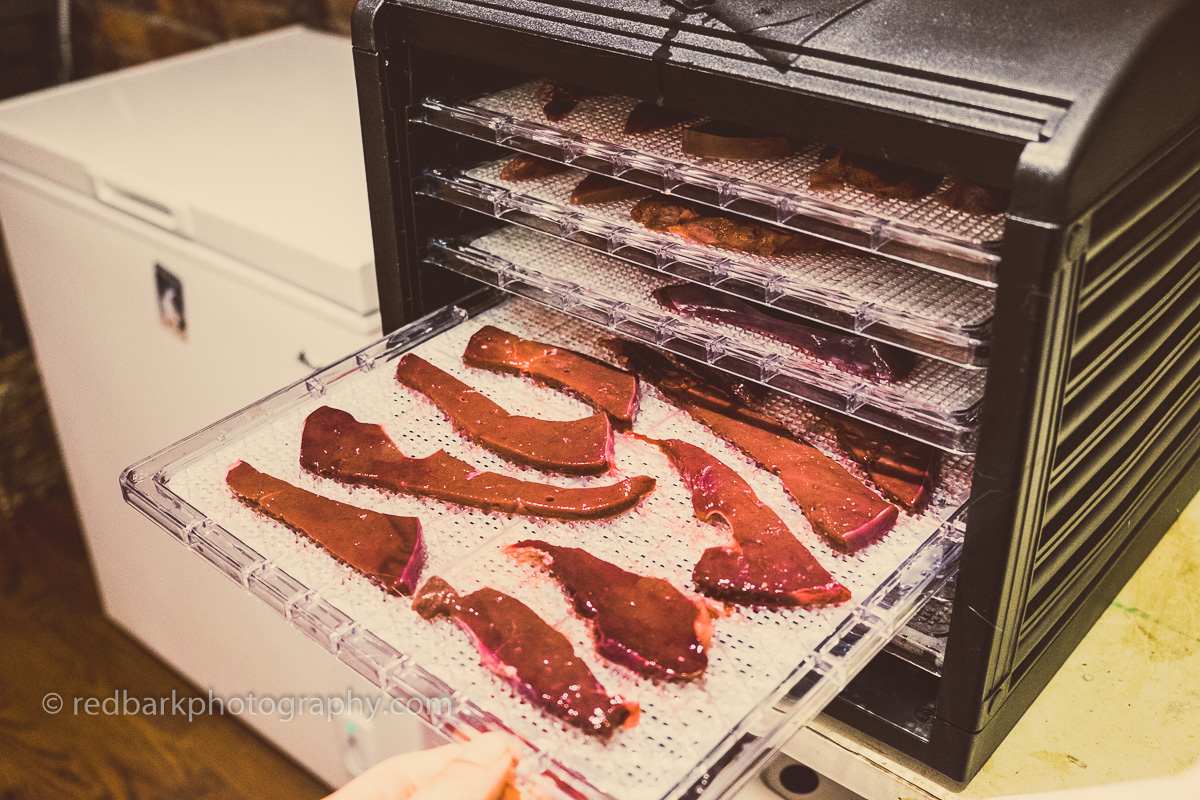- Whiskey
- Bourbon
- Feeding details
- Proteins
- Extras
- Supplements
- Meal Bones
- Sample Meal
- Travel and Training
- Amount
- Benefits and Downsides
- Risks
- Switching
- Digestive Issues
- Sources
Whiskey’s tummy
When I first brought Whiskey home, she was eating kibble and for some reason, kibble just didn’t really make “sense” to me. I avoid highly processed food in general because it just doesn’t make me feel so good, and I wanted to feed Whiskey something I understood and felt good about. To me, food should look like food, and I started cooking for her and trying different menu options. I wasn’t against kibble sometimes, but I just felt that since I wouldn’t like to eat nutrition bars all my life (but hey once in awhile is fine), I wanted to try and feed more fresh foods to my growing puppy.
After a couple weeks it just became very time consuming and I was getting anxious about balancing all the required nutrients. It’s very hard to know how much calcium you’re feeding for example, and although Whiskey LOVED the cooked meals, it just wasn’t a practical long term solution. At that point she ate more food than I did, and I was making a huge batch of slow-cooked food every other day and grocery shopping just took too much money and time.

Soon after I shifted her onto raw food, but it took me 1 year to figure out what Whiskey did best on, and where best to buy from. Whiskey was very picky with food, and she had multiple issues with Guardia and diarrhea, vomiting, and other illnesses in the beginning so it took awhile to find our rhythm. In the end, I found out that Whiskey likes semi-frozen meals, and doesn’t like chicken, gamey bird meats (like Quail and duck), but is ok with Turkey. When I say she doesn’t “like”, she’s not intolerant, she just refuses to eat it, and will pick at her food for weeks if I try to out-stubborn her and would get way too skinny. Whiskey seems to do well on lean meats like Turkey, Lamb, Pork, and Elk (we had a scare where we thought she might have had Pancreatitis), and is very sensitive to greasy foods (much more sensitive than Bourbon for example). Every dog is different and it’s really good to find out what works for your dog (like people!).

Bourbon’s appetite
Bourbon also came kibble-fed and I was able to switch her over to raw within one meal several days after she settled into our home. She had no tummy problems and eats really well. Bourbon eats meats well but is oddly picky with new foods like vegetables and fruits. While Whiskey will beg for orange slices and strawberries, Bourbon won’t touch them. Each dog is different! Bourbon’s done well with every protein we’ve thrown at her. The only thing I have to keep in mind is to slowly increase her large “bone meals” (meaty bones as a meal) or she’ll be overwhelmed with a bone too large! Bourbon loves fish, even whole fish, while Whiskey will only eat small chopped up fish.

Vet opposition
Most traditional vets are opposed to the raw diet for a variety of reasons. Most studies about dog food are done and funded by large dog food companies and there is very little financial incentive to study the benefits to raw so first off there’s little evidence to back raw food as being an healthier alternative. Raw food manufacturers are new and small (and tend to be local because raw is harder to ship) and don’t have the resources to fund these studies.
Also because raw diets vary so much, vets can be scared of the possibility of nutritional imbalances. There are definitely some people that aren’t going to do the research or even know that this is something you need to do. If you feed only hamburger meat and eggshells, your dog is going to be sick, so you’ll need to do a minimal amount of research or purchase a pre-mixed raw. At the least a dog needs muscle meat, organ (lots of minerals and vitamins in organs), and bone. Last, the risk of meat-borne bacteria. While there is always a risk of handing raw meat, it’s not more so than any meat that you eat (we buy all human grade meat for our dogs). Vets don’t want to take on the extra liability if they recommend a raw diet.
We’ve worked with vets that oppose or support our raw feeding but once they see how healthy our dogs are, their teeth, coat, and demeanor, I haven’t been given too much grief. I’ve found over time they’re more supportive or at least there’s less opposition.
Daily feeding raw, the details
Semi-frozen seems like the best texture for most dogs. Some will eat fully frozen, and most that I know aren’t crazy about fully defrost soft mushy raw blend. For meaty bones, Whiskey didn’t’ want to work for her meal, so I would sear the sides of the turkey neck or lamb neck to get her “into it”. I also taught the dogs to eat on a mat for easy indoor cleanup. I feed my cat the same meat as my dogs, I just add extra taurine into the food for her (in the form of hearts).
Everyday I defrost the next day’s meat and feed the meal I put in the day earlier so its’ semi defrosted in the fridge. We have a deep freezer (even in the apartment we bought a deep freezer) so we can get about 120 lbs of meat at a time to keep costs and shopping less. We use THESE containers and put a couple blocks in. Whiskey eats about 1.5lbs and Bourbon (currently 8 months) eats about 2lbs. I use a fork to break up the semi-frozen blocks into a bowl, add any extras, and feed. It takes approx. 2 mins to prepare. We use a sanitizing wipe or spray on the mats after they’ve eaten and that’s about it. I’m extra cautious about tripe and I’m always in the room with the girls while they eat. I like to prevent any guarding issues with eating (all 3 are fed at the same time), and if we’re feeding bones, I’m also there to encourage them to stay on the mat. They also eat better and are less insecure if I’m there. If one finishes much faster, I’m also there to remove a temptation for one to go after another’s meal.

Proteins we feed
I usually buy my food in bulk 40lb boxes of a single protein although sometimes I might get patties, or pre-mixes to make my life easier (or if someone is pet-sitting I want their lives to be easy!). Most mixes we use are around 80% muscle meat, 10% organ and 10% bone.
Beef -local, but higher fat, prefer elk but harder to find
Turkey- our go to protein, lean and easier to digest than chicken
Pork- lean, we use rarely but I do like to mix in different protein, there is a blanket warning about feeding raw pork because of larvae of Trichinella spiralis (a parasite), however this is not an issue in Canada
Elk- Low in fat, we love elk but hard to find and more expensive
Fish- whole fish from Asian food markets, or fish byproduct from our local fish shop (odds and ends that don’t make it to human products), please note to freeze wild caught salmon or any hunted meats for 3 weeks before feeding to avoid parasites
Nutrience Raw or other pre-mix- just feed packets and done! includes supplements, veg, variety meat mixed already
Make sure the premix has muscle meat, bone, and organ, if not, then make sure you add some. You don’t need to add it in equally every meal, just overall. For instance some premix doesn’t have bone because it’s hard to grind up beef bones. I might feed 3 meals of beef without bone (2 meals a day) and then feed one meal of meaty bone. If I don’t add veg to one meal, I might add extra to another. You’re aiming for variety overall, not variety in every meal.

Extras
lamb neck- Whiskey’s favorite, a good treat I can’t always afford, Whiskey prefers it seared (roll eyes here)
chicken carcass- Moo and Bourbon, best to start puppies from
chicken/turkey hearts- for Moo (I feed her dog meat mix and add extra hearts for taurine)
turkey/duck neck- Bourbon loves, Whiskey doesn’t seem to digest these well anymore (although turkey meat is ok)
green tripe- Amazing for both dogs, I try to find whole pieces, not ground down (cheaper and less processed), super smelly but healthy if you can deal with the smell (not for the newly initiated into raw feeding!)
pumpkin (canned)/ steamed yams
steamed veges, chopped spinach,
chicken egg/quail egg
berries
leftovers (nothing greasy, toxic, saucy)

Supplements
I use GreenMin, Soulfood from Dr Dobias (I use about a 1/3 of the recommended amount a day)
Fish/sardines/krill oil for omega 3s
Turmeric as an inflammatory (after high impact activity, or any swelling)
Green lipped mussel for joints
Kiefer for probiotics
Gutsense (after vomiting or diarrhea or antibiotic use)

Meal bones
We feed meal bones 1-3 times a week. This is to help clean their teeth, and when I just need a break because it can take up to an hour for Whiskey to break down a piece of lamb neck. Chewing on a meaty bone takes brain power and it’s something they both enjoy and get tired doing. It’s the perfect rainy day activity.
See this as an opportunity to vary your usual proteins, and size depending on your dog’s chewing ability. Start with smaller bones with a puppy or cats, like chicken carcass, and duck neck. My cat can break down turkey necks but she’s a bit…crazy. Start young and with boney pieces like chicken backs or turkey necks in sections (chop them up). If your dog is just licking the the meat if they are playing with it too much and cut into the meat so there’s more to work with. Whiskey also preferred her meat seared (I’m serious, she was that picky but then she would eat it). Don’t try cartilage until you know your dog is really into bones. Whiskey hates the texture.
If you can feed outdoors that’s ideal but we have to feed indoors so we’ve taught the dogs to eat on a mat. Look around for a butcher than might keep you some cuts for cheap. Avoid weight bearing bones on large animals if your dog is a big chewer (they might crack teeth) and never feed cooked bones, especially small birds because cooked bones are brittle and can break and puncture intestines. If your dog does eat some by mistake, just keep an eye out for any signs of issues.
Sample meal

I typically don’t spend too much effort making a fancy meal for my dog but sometimes I’ll have extras. The base for most meals is just the block of meat I buy in bulk. Here’s an example of how much effort I put in myself, although I see many dog parents that make the most Instagram worthy meals for their pups!
Simple meal (50%): 1 bock of meat half defrosted
Regular meal (35%): 1 block of meat, some veg, supplements
Fancy meal (10%): 1 block of meat, quail egg, fish, veg, tablespoon kiefer, supplements, berries from garden
Bone Meal (10%): 1 piece of meaty bone
Travel and Training with Raw
For travel I’ll usually bring a couple blocks of meat for the first couple days and put them in the hotel fridge or an ice box. Pre-mixes are easiest at this point and sometimes the pre-packed packaging really helps in an ice box. If we are going into the backcountry our somewhere without a fridge I’ll start bringing freeze dried raw. There’s many different options on the market and in most cases you do get what you pay for. Try feeding the freeze dried as treats or food topper before going on the trip to make sure your dog will eat it happily first. I’ve found some cheaper brands will show in loose stools, but we’ve had the best luck with Open Farm’s freeze dried raw. Our dogs love it so much I use it as training treats and meal supplements while training Bourbon as a puppy. Also if your dog has also done well with kibble I don’t see harm in switching to kibble for travelling either as long as stools show no change and your dog seems to be doing well. Of course like always, I’m not an expert and just speaking from my own personal experience.
Amount to feed
Feed the dog in front of you. Start with an amount. If your dog is skinny, double it until your dog looks good, then reduce the amount until your dog looks healthy. If your dog is too big, halve the amount until your dog looks good, then find the amount in-between that keeps your dog at that weight. Don’t move up and down in small amounts. Watch their poop, bugs? loose? tight? it will tell you lots!
Our costs are around 2-3$/lbs (Canadian dollars) in bulk 40lbs box. 53lbs Whiskey eats about 1.5lbs a day (3% of body weight but very active dog) and 41lbs Bourbon eats about 2lbs (5% of body weight at 8 months). They get extra on days we are doing big hikes, and maybe less if we’re not doing too much (although that’s rare because Bourbon doesn’t really allow that scenario).
Puppy *first month home- 8-10%
Growing puppy- 6-8%
Teenager puppy- 4-6%
1-2 yrs- 3-4%
adult 2-3%
active adult- 3%
senior/less active/overweight adult – 1.5%

What are the benefits to feeding raw
-you know exactly what you are feeding, easier to control for allergies
-not processed
-local sources
-control over ingredients (more fat, less fat, more meat, less pumpkin)
-fresh food, easily digestible
-less gas, less stinky breath, less poop (more food used, less poop wastage)
-no preservatives
-no fillers needed to make kibble
-clean teeth (bones and no fillers/carbs)
-less “doggie” odour
-less shedding, softer shiner coat
-more energy, better immune system
Downsides to feeding raw
-tends to be more expensive
-gross compared to kibble
-need to have organization and defrost, etc
-more washing, more hassle
-limited usage (ie compared to kibble best before date)
-harder to source
-need travelling options
-can worry if old/young/immune compromised
-need freezer space

What are the risks and how do we mitigate them?
If there’s young children or very old family members that may be immune compromised, keep surfaces clean and don’t use the same bowl for humans and dogs. Use the same precautious handing any kind of meat as with the dog food. Avoid kisses right after eating. Don’t keep food too long defrosted, we’ve rarely had this issue, but I’ve refrozen the food (sometimes even for an hour or two) if I think we might be going on a camping trip. Remember humans are more at risk than dogs to things like e-coli, dogs eat loads of unsavory things and don’t get sick and their stomachs are better adjusted to eating raw meat than ours are.
Switching diets to raw
This really depends on the dog that is transitioning and can be easy or hard. With Whiskey it took months going from kibble to cooked to raw. Kibble to cooked food is really easy, and from cooked to raw, it took a longer time. I was new to raw feeding and was trying many sources and things. I also didn’t know that half frozen is ideal for texture! Whiskey is so picky with her food and since she was the only dog eating, there was no sense of competition (she ate better when we petsitted another dog).
Bourbon just switched outright and never looked back. Some dogs are able to eat one meal kibble, one meal raw without issues, others cannot. Slow cooked food is the easiest to digest so use that for transitioning if you have a sensitive tummy. Start with a raw meal after 12-24 hours of a kibble one, start with a smaller amount, maybe with some pumpkin. If your dog doesn’t like half-frozen, try a room temperature meal but make sure you don’t leave the food out very long.

Digestive issues
If your dog gets sick or has stomach issues after switching, watch their poop. As soon as Whiskey or Bourbon gets diarrhea or vomits more than once, I switch straight to slow cooked turkey, white rice, and pumpkin (or carrots). I also use Gutsense from Dr Dobias (probiotics specifically for dogs). I used to use another brand but once I looked up the ingredients I was really disgusted and found Gutsense. I keep feeding until the poop looks good for a couple days, then slowly transition back to raw. I basically just throw everything into a slowcooker and make a massive amount of congee (Chinese rice soup). Giardia is pretty prevalent where I live and after I learned to do this we haven’t had to go to the vet over any stomach issues since they clear up themselves.
BC Sources we have tried and used and recommend
RainCity meats $ (delivery) email muttleycrewadventures@gmail.com for details
Beltrame meats $
B&T Raw $
In the Raw $$
Nutrience Subzero Raw (Petsmart) $$$
True Carnivores $$ (delivery)
Open Farm (Discount Code Whiskey10) $$$
Supplements from Dr Dobias $$



















